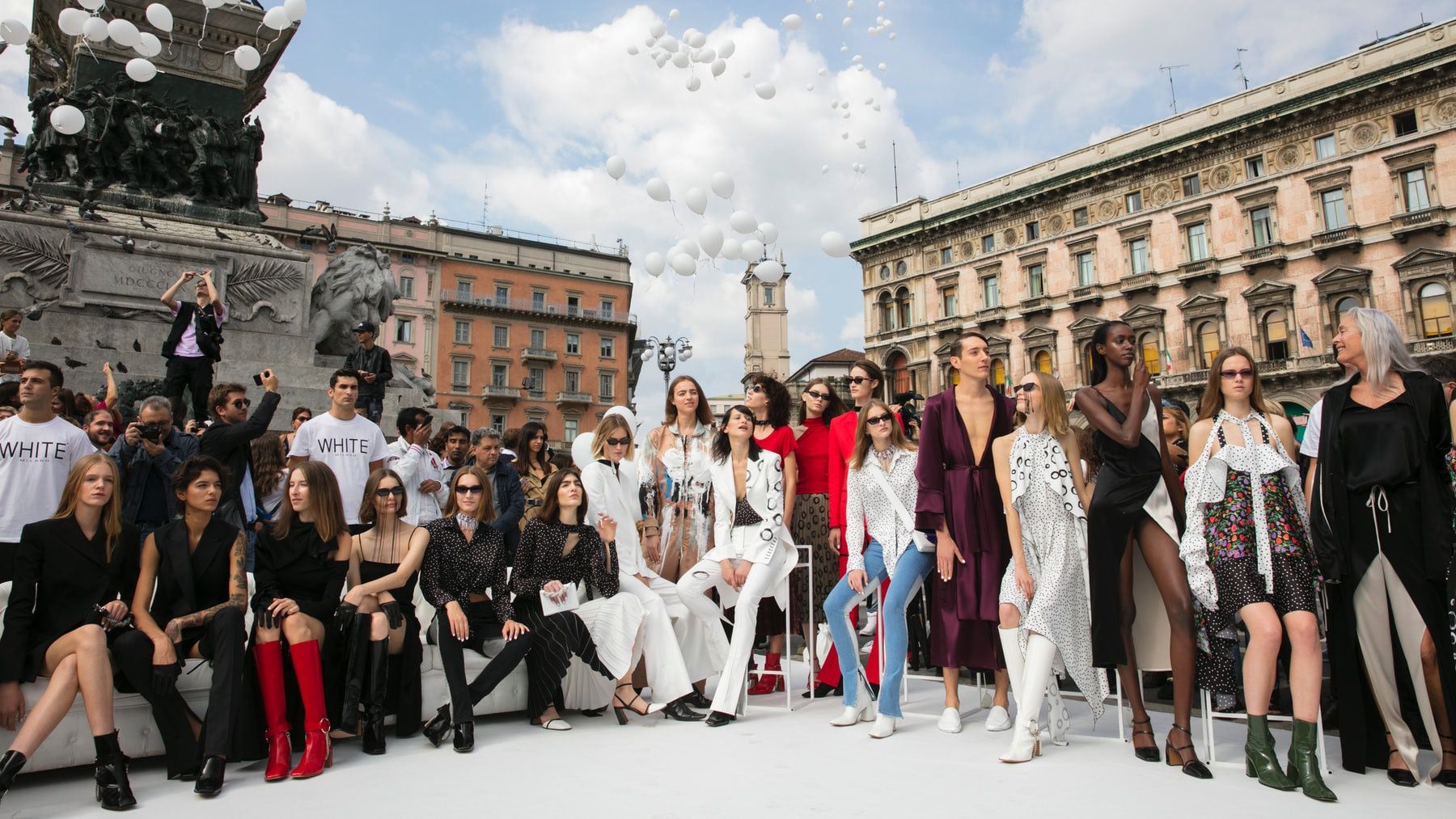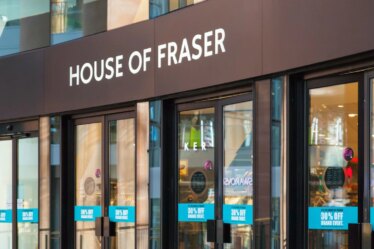
SHANGHAI, China — With over 26,000 attendees across four days, 600 exhibiting brands and a proven track record for discovering emerging talent such as Uma Wang, Stella Jean and Lucio Vanotti, White is Milan’s largest and most significant womenswear tradeshow. Founded in 2000, the tradeshow was the cornerstone in the development of the Tortona neighbourhood of Milan, which has become the city’s fashion district, attracting showrooms and major brands including Prada, Ermenegildo Zegna and Armani, which opened its Silos space in the area in 2015.
Seeking to build on this success and take advantage of the increasingly discerning and sophisticated tastes of Chinese consumers who, having grown tired of overly distributed mono-brand stores, are shifting their shopping habits to more individual expressions of self, White has entered into a partnership with Shanghai Fashion Week and Confartigianato Imprese (the Italian artisanal brand association) with the support of the Italian Trade Agency (ITA). In October 2017, a delegation of 56 SME Italian brands will visit Shanghai Fashion Week with the intention of building awareness of Italian luxury and the “Made in Italy” brand, while forging commercial relationships with domestic distributors and retailers.
The partnership is launching at an opportune time. At the press conference announcing the project, Michele Scannavini, president of Agenzia Ice, the government office in charge of promoting Italian companies internationally, told BoF that Italian exports to China have grown 20 percent over the last seven months, with leather goods and accessories growing 29 percent, apparel 11 percent and footwear 8 percent. Today, fashion represents approximately 13 percent of total Italian exports.
“China has huge potential as a market for Italian fashion,” says Scannavini. “It is a market where Italian fashion enjoys a very high reputation because of the big Italian brands that are already present in the market, so we believe it is the right time to take the small and medium sized enterprises that are rich in innovation and creativity to China, and give them the opportunity to show the market what it is they do so well,” he continues.
In order to support businesses that export to the Chinese market, the Italian government has significantly increased its expenditure on trade related projects in the country. In the last year alone, the funds dedicated to promoting “Made in Italy” in China increased from approximately €4 million a year to approximately €20 million. “That of course is still not yet enough, though we are moving in the right direction,” says Ivan Scalfarotto, the undersecretary at the Ministry of Economic Development. “In the past, we were not good enough in investing in China and seeking our share of the new market, but things have changed a lot over the last year and half. China is running a number of strategic processes that are very interesting to Italy. Its ‘One Belt, One Road’ plan is the new Silk Road, which originally started in Venice, so we really do feel very close to China. There is a lot of mutual interest and with such a large market, it would be very short-sighted to not to try and do something more than in the past,” he continues.
Equipped with government funding and years of expertise, White intends to not only help its delegation of 56 brands build lasting and meaningful commercial relationships in China, but to also tell the story of Italian craftsmanship and design to a whole new cohort of consumers. BoF sits down with White chief executive Brenda Bellei to hear how she plans to do it.
BoF: Why is now the right time for SME Italian brands to enter China?
Brenda Bellei: I think that it is the right time, because Chinese consumers want to discover new things. This partnership is actually the result of a wider strategy we have rolled out in recent years. We began by bringing Italian brands to Shanghai for smaller, dedicated events in multi-brand showrooms such as DFO and other larger venues. From that experience, we really saw that there was a growing interest in Italian labels. The showrooms have consistently told us that since luxury brands have opened so many mono-brand stores, consumers are looking for a new type of concept. They have their own Chinese product, they have the luxury brands, but they don’t have any product in the middle.
Now, thanks in part to the bloggers that have educated consumers on creating a more personal style, consumers are looking for that type of product.
BoF: How did you choose the brands that will visit Shanghai Fashion Week?
BB: The Chinese market is ready for luxury at a good price. When we created the brand mix we tried to not only select strong products, because in China there are millions of products on the market, so we selected the brands that were best able to contribute to a narrative around the Italian lifestyle — from the shoes to the accessories to the apparel. This is also the reason we are shooting a series of images that will be posted on social media channels such as WeChat, so that we can really push the concept of the Italian lifestyle. What it is and what it means — that is the story we want to tell with the fabrics, the production methods and more. Story telling is so important.
Additionally, we looked at all aspects of the brands’ business. To be selected, brands needed to have a good production record, and the ability to deliver product of good quality at a good price. The brand selection includes a mix of bigger, more established names like Casadei, Faliero Sarti, Stefano Mortari, L’Autre Chose and Le Sarte Pettegole, which are classic, medium-sized Italian brands that are very strong in production and offer a good balance between price and quality, and more cutting-edge and niche labels like Daniele Carlotta, May Moma Jewelry, Alberto Zambelli and Moi Multiple.
BoF: How do you intend to present the brands during Shanghai Fashion Week?
BB: We are arriving with a format that is not the typical trade fair format. It will be more like a mix between the floor of a department store and an entertaining space with lounges and areas to relax, where people can meet and enjoy Italian food. It’s a very social format. We want to do something completely out of the box and immersive, similar to when you step into an exhibition. We also have a PR strategy, with numerous activations while we are there, including roundtable talks on Italian culture, fabrics and design, which will be posted live on social media.
We have invested significantly in the how we can make this tradeshow different. When we started in Milan we wanted to offer brands an unusual setting, one that was contemporary and not like the tradeshows that existed before. We introduced art, music and a much higher quality of set design. We have also set ourselves the same challenge in Shanghai.
BoF: What do you believe will be the most challenging aspect of the initiative for the brands taking part?
BB: Our goal is for the 56 brands to develop potential commercial partnerships and network with the Chinese industry. Doing business in China is very different to the way we do business here in the West. The buyer is a very different kind of buyer in China. An example is the Bailian Group, a company that manages 6,000 stores and is one of the largest property developers in the country, which operates with a single buying team. We will all have to adapt to a new business model. Our brands will use their time in China to understand how they can do business in this new market, reflect and adapt, and then return with their tailored proposition. We have a long-standing tradition of boutiques and multi-brand stores in China. The culture of multi-brand is growing season after season and our brands should be well positioned to take advantage of that.
BoF: What metrics will you use to measure the success of the project?
BB: We very much hope that the Chinese market will engage with the project fully and that it will be discussed by the press, the fashion industry and by consumers. However, through experience, we know that at the beginning, the commercial results are unlikely to be immediate. We have discussed with the brands that the project is different to a normal tradeshow. Yes, they are there to sell, but they are really there to sell Italian heritage and the Italian know-how related to their brand.
They will certainly meet some buyers, but they will also go to showrooms and meet distributors, influencers, opinion leaders and more. The attendees will be a different kind of people. When these brands exhibit in Milan they write orders all day, but in China it will be different. Everyone involved, from Madame Lu, the vice secretary general of Shanghai Fashion Week, to the political bodies here in Italy and the brands themselves, believes in the future of the project. Ultimately, we hope that these brands will open up the Chinese market while building awareness of Italian luxury and craftsmanship.
WHITE is the Associate Partner of the BoF China Summit 2017, with additional support from the Italian Trade Agency (ITA), and Confartigianato Imprese.



